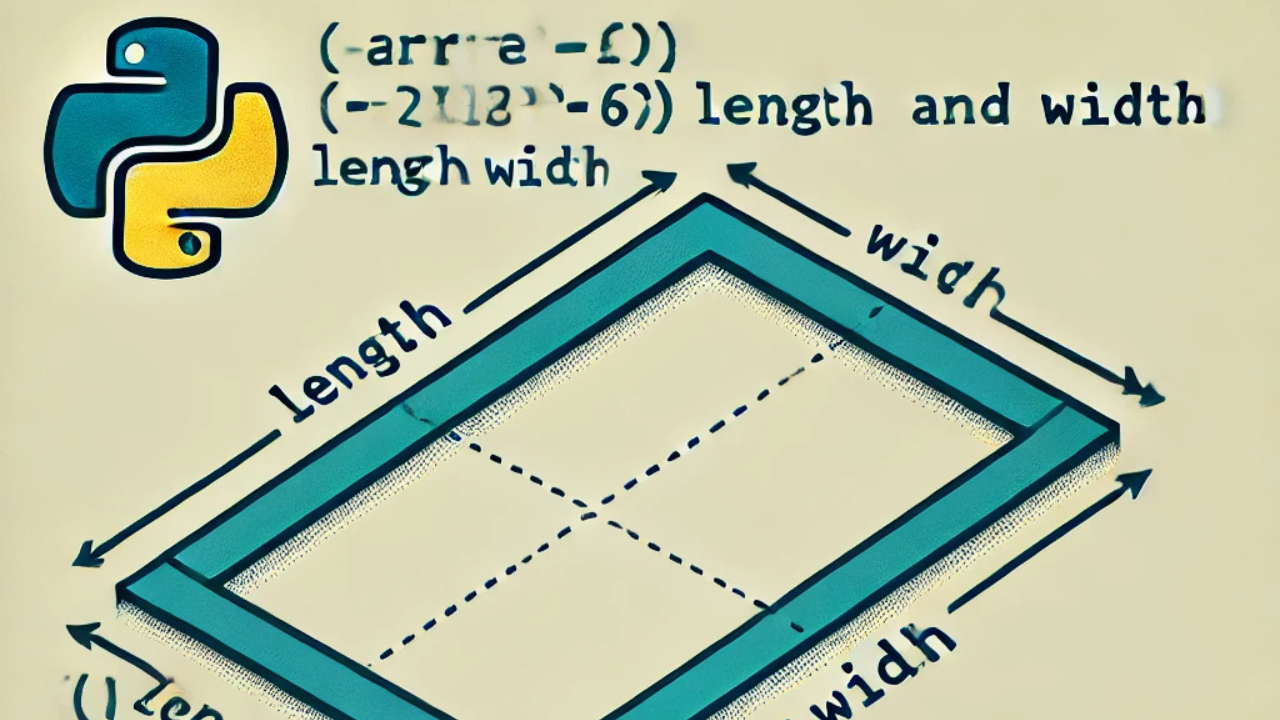Area Of Rectangle In Python
Area Of Rectangle In Python
When learning Python, one of the first things you’ll encounter is the concept of geometry, particularly calculating areas. A rectangle is one of the most basic shapes, and understanding how to calculate its area is a great way to start. In this article, we will walk through how to calculate the area of a rectangle using Python in a simple and straightforward way.
What is the Area of a Rectangle?
Before diving into the code, let’s first review the formula for calculating the area of a rectangle. The formula is simple:
Area = Length × Width
Where:
- Length is the longer side of the rectangle.
- Width is the shorter side of the rectangle.
In Python, we can easily apply this formula to compute the area using variables for the length and width.
Step-by-Step Guide to Calculate the Area
Let's break it down step-by-step, starting from taking input from the user to displaying the calculated area.
-
Taking User Input
We’ll need to gather the length and width of the rectangle from the user. This is done using Python's built-in
input()function. However, since theinput()function returns a string, we will need to convert those values into numbers (integers or floats). -
Calculating the Area
Once we have the length and width, we multiply them together to calculate the area.
-
Displaying the Result
Finally, we display the result using Python’s
print()function.
Python Code Example
# Step 1: Taking user input for length and width
length = float(input("Enter the length of the rectangle: "))
width = float(input("Enter the width of the rectangle: "))
# Step 2: Calculating the area
area = length * width
# Step 3: Displaying the result
print(f"The area of the rectangle is: {area}")
How Does the Code Work?
Let’s walk through the code:
-
Step 1: We use the
input()function to take input for both the length and the width of the rectangle. Thefloat()function converts the input string to a floating-point number so we can perform mathematical operations. -
Step 2: We multiply the length and width to calculate the area.
-
Step 3: The result is displayed using an f-string, which is a clean way to format strings in Python.
Example Output
Here’s how the program works when you run it:
Enter the length of the rectangle: 5
Enter the width of the rectangle: 3
The area of the rectangle is: 15.0
What to Keep in Mind
-
Input Validation: This code doesn’t handle invalid input (like strings instead of numbers). You could add error handling to ensure that users provide valid numerical values.
-
Different Units: You can adapt this code to handle different units (e.g., meters, centimeters). Just make sure to specify the units in the input or output for clarity.
Conclusion
Calculating the area of a rectangle in Python is a great way to understand basic programming concepts, such as taking user input, performing arithmetic operations, and displaying results. The code provided above is simple, effective, and can be easily modified for more complex applications.
As you continue to explore Python, you’ll realize that performing mathematical operations is one of the most fundamental and useful skills. This concept can also be expanded to more complex shapes and formulas, providing a solid foundation for building more advanced programs.







Post a Comment